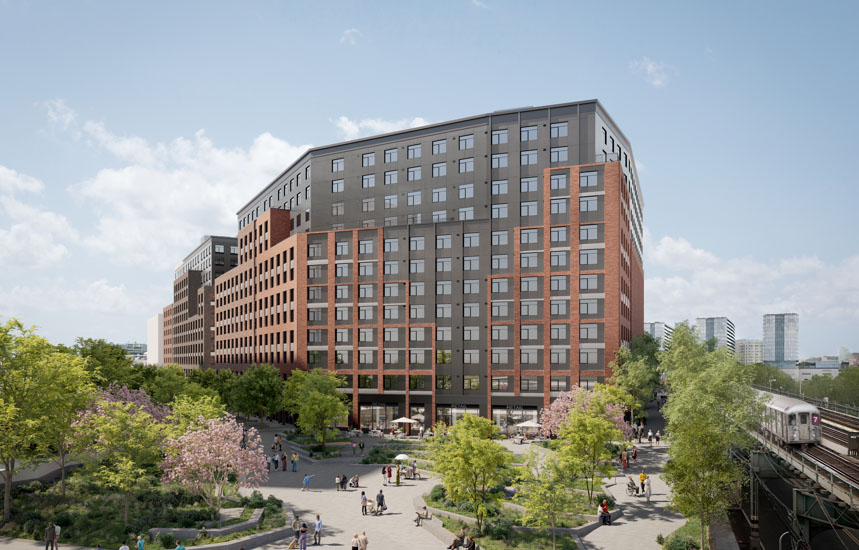An inside look of the transformative new tax incentive program to re-imagine Manhattan CBDs
Manhattan, NY BOMA New York board of directors received a private presentation to review the specifics of the newly announced M-CORE program developed by the NYC Economic Development Corp. and the NYC Industrial Development Agency.
At a briefing delivered by Emily Marcus, executive director of the EDC, owners were encouraged to pre-apply for the program, designed to “reimagine New York City’s commercial districts as vibrant, 24/7 destinations,” and “catalyze future investment,” significantly lowering present-day vacancy rates.
Marcus cited an August 1 deadline for the first wave of pre-applications for M-CORE eligibility. The program is expected to have only a two-year application window. She expected that 10 – 25 “viable” projects will garner full approval from the IDA.
Overall, she said the program will address the “current needs and headwinds we are facing today.” She cited a current office vacancy rate is 22.2% – “a near historical high.” On the other hand, she said, New York City has recovered 99% of the private sector jobs it lost during the pandemic.
The program will geographically include Manhattan south of 59th St., excluding Hudson Yards and the Penn Station redevelopment area. She said, “Midtown, Midtown South and Lower Manhattan represent 45% of New York City’s jobs, and 80% of its office space,” adding that the Central Business District generates 58.5% of city-wide office and retail property tax revenues. “It is important to us that these districts remain financially viable.”
Marcus was encouraged by current market conditions that have seen a “flight to quality buildings” by tenants. As evidence, class A and trophy buildings are maintaining high rent premiums and have received the highest amount of leasing activity. M-CORE will reward owners who are willing to invest in projects to transform existing buildings into higher quality properties. The program does not cover residential projects, which are not in the purview of the IDA.
Marcus said that M-CORE will be a “win-win-win” program. Owners will decrease the costs of investment to modernize outdated office space through long-duration tax benefits. For tenants, M-CORE will “unlock” the creation of new, modern office space they now demand. The city will receive a “larger net benefit than existing as-of-right incentive programs.” She estimated that over the 20-year M-CORE benefit period, the city will receive $759 billion, and an additional $2.3 billion in construction and employment activity.
Getting into the specifics of M-CORE, Marcus outlined its advantages over the existing ICAP program. Owners must make a new investment of at least 75% of their present building and land assessed value. Regarding property taxes on existing building improvements, PILOTs will be stabilized at 100% of pre-improvement value. The building tax abatement will be up to 100% on new project improvements. Likewise, land tax abatement will be up to 100% on project improvements. M-CORE will also include protections against inflation.
The property tax abatement term will be 20 years (as opposed to ICAP’s 10-year term), with annual 20% phase outs in the final four years. In addition, projects will receive sales and use tax exemptions, and mortgage recording tax exemptions. Marcus said, “The investment minimum is much higher than ICAP, but the benefits are far deeper.”
In addition to geographic eligibility, building size must have a minimum of 250,000 gross square feet (gsf) and have been built prior to 2000. Additional requirements include Local law 97 compliance, MWBE goals, and living and prevailing wage compliance.
As with most conventional tax abatement programs, each M-CORE applicant must also present a “valid inducement argument,” that their project could not happen without the benefits.
Marcus offered a hypothetical case study, in which the owner of a 600,000 s/f, class A building with an assessed value of $67 million would invest $50 million. Over the 20-year M-CORE period, the owner would receive $49.6 million in benefits compared to $3.9 million over 10 years with ICAP.
In response to questions, Marcus stressed that existing ICAP recipients are ineligible for both ICAP and M-CORE at the same time, but argued that giving up ICAP benefits for M-CORE benefits would make economic sense for owners.
Marcus urged owners to act quickly, citing a “tiered benefit” schedule, the building size eligibility requirement increases and the abatement percentage on project improvements decreases over time.
In conclusion, Marcus was very clear that the City expected “significant and transformational improvements,’ and “not simply a lobby renovation or new elevators.” The program was seeking new layouts, building systems, current Local Law 97 compliance, pre-built and common spaces, and health and wellness spaces. Ideal candidate properties would include a “demonstrably high percentage of current vacancy and near-term targets for construction commencement and completion.”
Marcus wrapped it up by stating, “We’ve heard about some really exciting projects that can be brought to life.”
Related Cos. and Sterling Equities open housing lottery for Willets Point Commons


The CRE content gap: Why owners and brokers need better digital narratives in 2026 - by Kimberly Zar Bloorian







.gif)

.gif)
.jpg)
.gif)